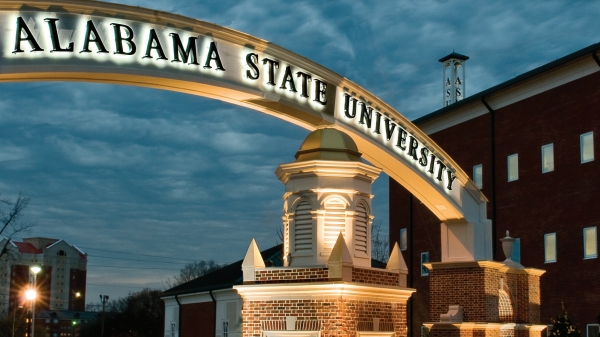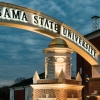There has been much debate lately about how we name public buildings and whether we should remove some names because of long ago actions that no longer conform to contemporary societal practices.
Public buildings are always tricky to name as evidenced by the fact that just a couple of years ago, the University of Alabama Law School was named after Hugh Culverhouse, Jr. in acknowledgment of a very generous donation. However, Culverhouse’s donation was later returned and his name was chiseled from the law school’s facade.
At Alabama State University many years ago, in-fighting and disputes among the trustees resulted in the Joe L. Reed Acadome being renamed.
Scandals and criminal convictions have caused other public facilities suffer the same fate. A variety of buildings once named after Healthsouth founder Richard Scrushy no longer sport his name.
Similarly, there is no longer an Enron Field; ditto the MCI Worldcom Center.
So, before we take further action to name or rename any public buildings, I would like to suggest a new criterion that should be used in the future.
It is always complicated to name something after a person who is still alive because the curriculum vitae is not complete. As long as someone is alive, there is more than adequate opportunity for them to act inappropriately, commit wrongdoing, or be revealed to possess feet made of clay rather than marble.
I order to ensure that a facility named in someone’s honor avoids becoming an embarrassment to the institution – a retreat as opposed to advancement – perhaps a good rule would be to wait until they have been dead for at least five years. That way their entire record is complete, most statutes of limitations have expired, and their legacy should be secure.
Of course, one problem with this proposal is that living people tend to contribute more when they are alive and are attempting to establish a lasting legacy that, along with a satiated ego, only their name on a building will suffice. Heirs tend to prefer to experience a legacy more in selfish monetary terms; naming opportunities thus abound for the living.
So, while donations might decrease, naming a building or whatever after someone who is deceased seems like a safe bet. . .or at least it used to.
I say “seems” because now we are in a local and nationwide frenzy to fully explore the lives of people for whom structures have long ago been named. And in doing this, any improper conduct is scrutinized based on our current understanding of what should have been acceptable, polite behavior during the life of the honoree.
Perhaps we are finally embracing Shakespeare’s observation that “the evil men do lives after them, but the good is oft interred in their bones.” No one can argue that commemorating someone who supported a criminal enterprise is acceptable. Not many cities have an Al Capone Avenue or a Benito Mussolini Drive. Open, obvious, and socially unacceptable behavior no matter how sizable the donation or political influence at the time can never reach the level of deserving commemoration.
But we must be very careful because the finer the tooth on the comb and the higher the magnification of the glass provides details and information that might be better left undiscovered.
In fact, few people look saintly when every nook and cranny of their life is fully examined.
Several times a year a new book comes out revealing that a well-known figure was a member of a socially unacceptable movement. Families under the yoke of an authoritarian government are shocked to discover an informer in their midst, a closeted Nazi or mafia hitman.
Years ago, France was so stunned that a documentary revealed more collaborators than resistance fighters that it was banned from television because it “destroys myths that the people of France still need.” And who can forget when decades after World War II ended, United Nations General Secretary Kurt Waldheim was exposed as a Nazi intelligence officer? Others have discovered past family connections to organized crime. DNA testing often confirms embarrassing assignations.
But in discovering a not so auspicious past, few communities completely jettison a native son and families still embrace wayward kin. Most simply use the exposure to show the failed humanity that affects all of us.
I once heard a businessman on a panel about ethics comment that “there is a little larceny in all of us.” In saying so, he was not refusing to condemn bad behavior, but was pointing out the permanence of original sin. Thornton Wilder penned the famous quote: “There is so much good in the worst of us, and so much bad in the best of us, that it behooves all of us not to talk about the rest of us,” which is probably a good thing to remember when we critique others.
I don’t know anyone who likes seeing their face in a mirror with magnification!
The lives of humans are complicated, complex and contradictory. Many seemingly mainstream people can have odd ideas about the world. In hindsight, old fads look sinister; the basis of past popular culture rarely survives contemporary scrutiny.
Political correctness changes with the wind and whims. A thorough background check unearths activities that are at the same time sublime, ridiculous, and embarrassing. So, if we are going to name public buildings after people, we should be very careful not only in who we choose to honor, but how we choose to judge them.
We must also make certain that judging ourselves by the same standards does not reveal more than a measure of hypocrisy, sanctimony, and pretense.
Rather than naming buildings after people, whether they are dead or alive, I have a much better idea. Perhaps we could name our edifices, parks, and public squares after non-violent animals, flowers, and friendly fruits and vegetables.
The Alabama State Capitol already sits on Goat Hill, and the University of Alabama has Rose Administration building; both of which provide precedent for my proposal.
Why not continue this trend for other buildings?
Who could be offended by Hippo Dining Hall, Squash Hall of Justice, or Daffodil Dormitory? If we start moving away from recognizing humans and honor non-flawed animals and plants, instead, we will have one less issue to divide us and give sign manufacturers a real boon to their business.
Happy April Fools’ Day to you all!










































